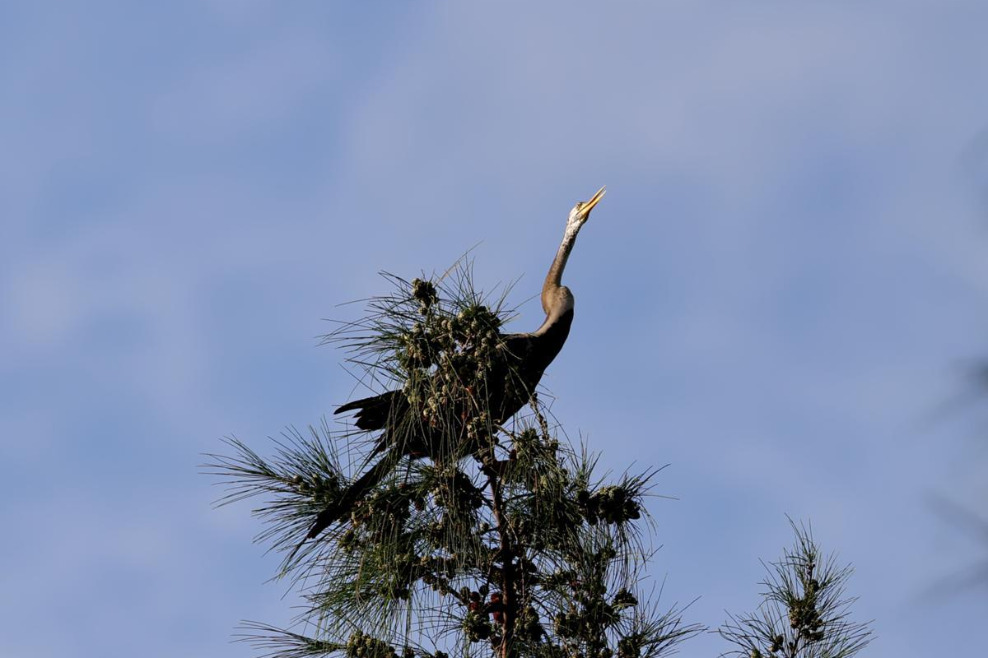Wild tiger conservation pays dividends in China

CHANGCHUN -- China has seen an increasing number of wild tigers and leopards, thanks to its persistent efforts in feline conservation.
According to a joint survey conducted by China, Russia and the United States in 1998, there were only 12 to 16 wild Siberian tigers in China. The species was once widely distributed in the country's northeast region.
The latest data shows that the population of wild Siberian tigers in the Northeast China Tiger and Leopard National Park, which sits in Northeast China's Jilin and Heilongjiang provinces, has exceeded 50, while the figure was 27 around five years ago.
Meanwhile, the number of Amur leopards in the park has increased from 42 in 2017 to more than 60.
UNREMITTING EFFORTS
Li Dongwei, who has engaged in tiger and leopard conservation for more than 10 years, clearly remembers that 12 years ago, the wild Siberian tiger was predicted to "disappear in China."
The situation is quite different in 2022 as the forest ranger often sees footprints of big cats in the park.
"Those tracks which were once rare are now a common sight," Li said.
In the mid-1990s, an all-out ban on hunting was imposed in Jilin and Heilongjiang.
To restore the habitat of wild tigers and leopards, the two provinces later decided to propose a 14,000-square-km national park, which was on trial in 2017 and officially established last year.
Since the trial period, Jilin and Heilongjiang have restored and cultivated 400 hectares of forest, planted 2,000 hectares of pine trees, built three passages for wildlife and closed down 19 mining enterprises.
Back in 2010, 13 tiger range countries including China committed to bringing tigers back from extinction with a goal of doubling wild tiger numbers by 2022. China has reached this target in advance.
Data from the park shows that only 33 percent of wild Siberian tiger cubs could survive to adulthood before the park was established, but the figure has jumped to 50 percent at present.
Apart from tigers and leopards, populations of sika deer, bears and other endangered species are also on the rise in the park.
"What we protect is not only a single species but also their habitats, surrounding vegetation and the complete food chain to make sure the species can survive and prosper in the environment," said Feng Limin, deputy director of the monitoring and research center of Siberian tigers and Amur leopards under the National Forestry and Grassland Administration.
HUMAN-TIGER CONFLICTS SOLVED
As a sanctuary of wildlife, the vast national park is also home to more than 10,000 human residents. Actions have been taken to ease human-tiger conflict as the comeback of the big cats also brings new challenges in this regard.
Early in 2006, the Jilin provincial government started to compensate residents for personal injury and property damage caused by wild animals. The national park will this year introduce commercial insurance for compensation for injuries and damage caused by wild animals.
"We are not worried anymore. If the farmland was damaged by boars or livestock got attacked, we will get compensation from the government," said Chen Limin, a local villager of Hunchun city, Jilin.
A tiger once pounced on Qu Shuangxi, a villager from Guandaogou village in the national park. However, Qu said there's no hatred towards tigers, "since we all benefit from the policies, and have better air, water, forest and life in the park."
Progress in tiger conservation is just an epitome of the country's achievements in ecological and environment protection.
As part of the country's nature conservation efforts (restoring natural habitats and protecting endangered species), China designated the first five national parks last October, including the Northeast China Tiger and Leopard National Park, the Sanjiangyuan National Park, the Giant Panda National Park, the Hainan Tropical Rainforest National Park, and the Wuyishan National Park.
These parks, covering a protected land area of 230,000 square km, are home to nearly 30 percent of the key terrestrial wildlife species found in China.
By 2025, China plans to improve its national park system, complete the integration and optimization of its nature reserve areas and initially establish nature reserve areas with national parks as a major component. This move forms part of the country's push for sustainable development.
- Scorching week forecast for various parts of country
- Young filmmakers' project paints multidimensional portrait of China
- Rare 1938 Guangzhou bombing photos to debut in August
- Power station solves renewable energy intermittency
- China appoints senior official for Hong Kong, Macao affairs
- World-first study analyzes minerals on far side of moon






































